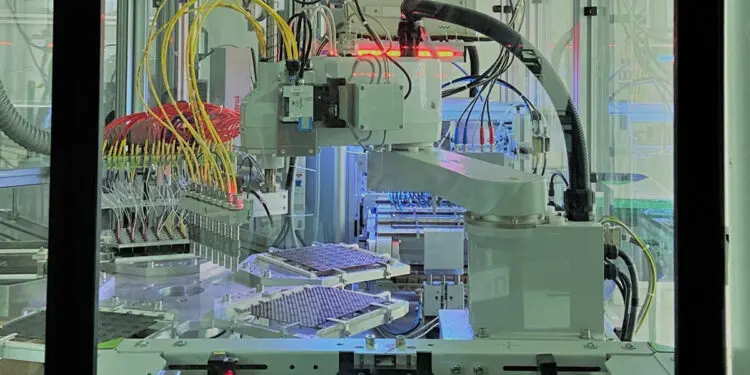CeramTec, a world leader in the design and manufacture of complex electronic ceramic components, is expanding its existing production capabilities to meet the rising demand for high-quality piezoelectric elements and materials.
The internationally operating company with sites in Europe, the UK, USA and Asia has invested in two additional machinery units at its piezoceramic centre of excellence in Lauf, Germany, which further multiply existing high-volume manufacturing capabilities for piezoceramic components, such as discs, rings and tubes, as well as increase automation.
Increasing demand for high-volume manufacturing
CeramTec is expanding its existing piezoceramic centre of excellence at the company’s Lauf site in Germany with two additional machinery units to meet the rising demand for high-quality piezoelectric elements and materials.
“We see growing client demand for high accuracy level sensing components, particularly for smart metering applications for water and gas as well as for ultrasonic flow metering, and are therefore continually working on further extending our existing capability at our Lauf site where, together with our facility in Wales, we specialise in high-volume piezoceramic manufacturing,” explains Melanie Bloss, Account Manager Measurement & Sensors at CeramTec. In a first step, a new unit for metallising and poling the piezoceramic components was installed last year.
Apart from handling the small piezoceramic components used in metering applications, this equipment will also be used for medical device applications to meet growing demand: Piezoceramic components are a key component in various atomisation systems which are increasingly deployed to deliver liquid medications in smaller droplets, enabling more precise and intensive dosage.
Centre of excellence with integrated production & modern technology
“This unit is an important step for us to not only establish our Lauf site as a centre of excellence for piezoceramics but also bolster our overall capabilities in this field for customers across Europe.” Melanie Bloss, Account Manager Measurement & Sensors at CeramTec
A second metallisation unit for wrap-around electrodes, which was installed in Lauf this year and went into operation in Q4, enables CeramTec to further integrate the production process and cover the entire supply chain in-house: “This unit is an important step for us to not only establish our Lauf site as a centre of excellence for piezoceramics but also bolster our overall capabilities in this field for customers across Europe,” says Melanie Bloss. The machine applies so-called wrap-around electrodes on the surface of piezoceramic components. This electrode pattern allows customers to easily establish electrical contacting at a favourable position within the mechanical assembly. Particularly customers with high automation levels in their production considerably benefit from wrap-around electrodes as they enable more efficient and easier handling of the connection process, reducing complexity and effort.
CeramTec’s integrated approach also includes working with an in- house engineering unit. As piezoceramic requires highly specialised production processes, including niche techniques, these on-site machinery experts were also key in building and installing the new equipment at the company’s Lauf site to ensure high-quality delivery of the mostly customised solutions CeramTec provides to its clients.































